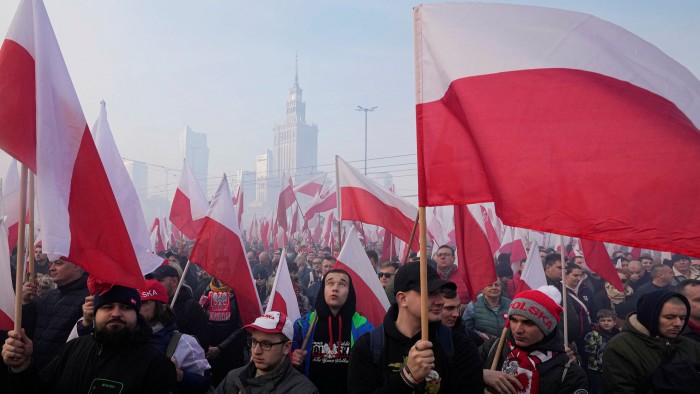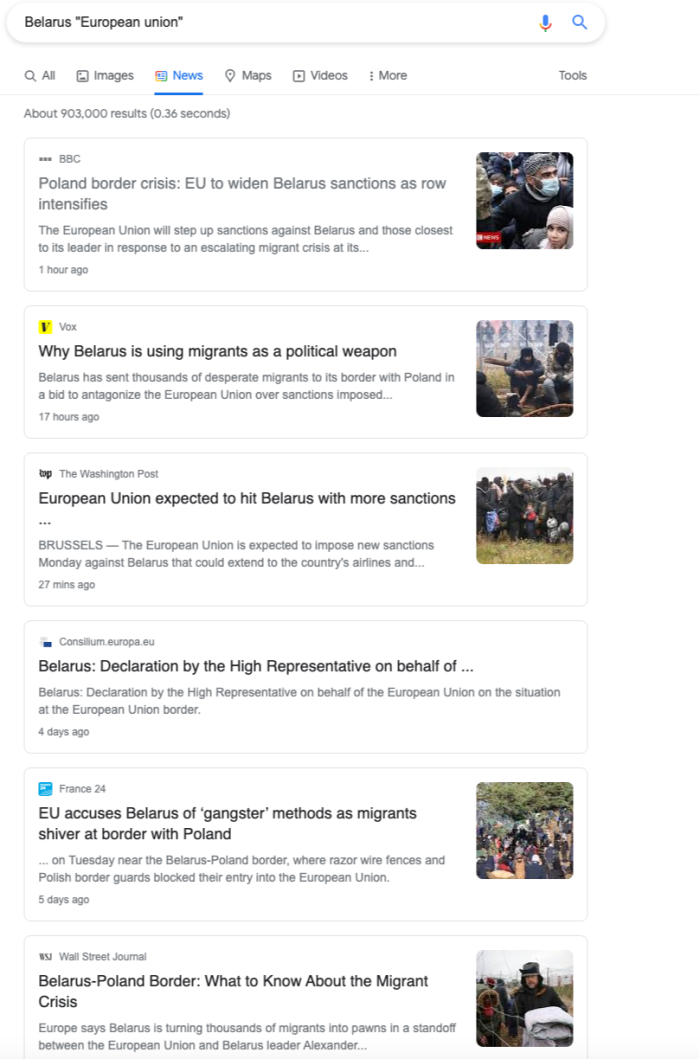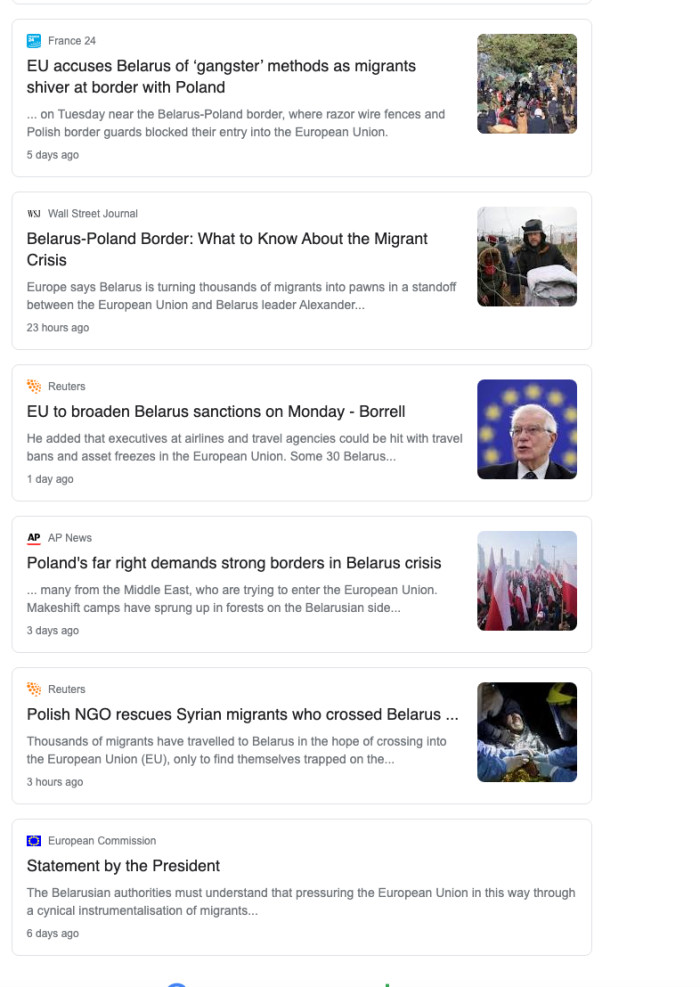Pricing in global hybrid warfare

Roula Khalaf, Editor of the FT, selects her favourite stories in this weekly newsletter.
Here at FT Alphaville towers we don’t pretend to be geopolitical experts. We are generalists who like to sweep into subjects intensively as and when they become market relevant.
But one thing we do think we are pretty good at is homing in on Titanic-sized blind spots before they become broadly acknowledged fact.
And one such market blind spot — the potential mother of them all — is that markets are overlooking the risk that an active state of international “hybrid warfare”, which has been in play for a number of months if not more, will soon intensify into a hot war.
For now, the idea that World War 3 has arrived in the form of a very active, but largely invisible, shadow hybrid war remains a fringe theory.
Nonetheless, in recent weeks, the force of realpolitik has set its sights on converging conflicting narratives about Russia in such a way that they have no choice but to reconcile. When they do, one of those narratives may emerge as more true (or important) than the other, prompting a potential reappraisal of current allegiances.
A good analogy for what we mean comes in the shape of a contestant in a TV reality show who plays both sides to get ahead in the game. At some point the separate narratives he’s been feeding fellow contestants can no longer square against reality. His multipolar opponents then begin to compare notes and realise they’re not really each other’s enemies but his.
The growing popularisation of the term hybrid warfare (even the Daily Mirror is talking about it) as something distinct to plain old “Russian disinfo” or “Chinese propaganda” is telling in its own right. It implies events going on that are far more strategic in nature.
As the FT’s special report on Cyber Warfare noted in a piece penned by Scott Tait, chief executive of Alfa Strategy and managing director for war-games at BlackOps Partner, in October:
In simplest terms, hybrid warfare uses capabilities not normally associated with war to coerce or subvert. Such techniques are intended to delay recognition that an attack is under way, paralyse decision making through confusion and discourage the victim from responding forcefully due to the absence of “legitimate” military targets.
Since the whole point of hybrid warfare is to disorientate the enemy to ensure the big secret that they are really being attacked never gets out, it stands to reason that every offensive action must be obscured by the cloak of plausible deniability.
Indeed, tell the average person that hybrid warfare is a strategic mechanism designed to divert his attention from the fact there’s a war going on at all, and they will probably have a giggle, regarding it beyond belief.
A casual stroll through the annals of military history tells us otherwise. Over the grand course of history, hybrid-style tactics have been par for the course.
Why should this era — aside from digitising the fundamental rules of warfare as described by Sun Tzu — really be any exception?
The purpose ultimately is to ensure the enemy, by not knowing anything for certain, is always likely to give the attacker the benefit of the doubt. In this way the ambiguity can be weaponised to strategically demoralise, confuse and divide the target population, making it impossible for them to defend themselves with conviction.
In the current incarnation of hybrid warfare the question is how many of the horrible things that have been happening recently are actually part of a strategic attack intended to demoralise and divide the West? How many have been wrongly rationalised due to strategic ambiguity as accident, a coincidence or a bad interpretation of data.
Any hint the enemy is on to what you’re up to (or worse than that, at risk of letting the cat out of the bag) and a strategic policy of deflection and leaning into the lie becomes necessary. Usually by way of projection, demonisation or the presentation of false equivalences. As a case in point, consider what the FT’s Dan McCrum went through with Wirecard.
To understand why we think markets should be more concerned than they currently are, look at events on the border between Belarus and Poland.
Owing to the Belarus border crisis the term “hybrid warfare” is moving out of the shadows and into popular parlance.
In Poland, almost every report over the past few weeks about Belarus has been framed through the prism of hybrid warfare (Google “wojna hybrydowa” (Polish for hybrid warfare) to see what we mean). We’d go so far as to say it’s become the go-to term to explain current affairs, with the Polish news media packed to the brim with explainers and definitional accounts.
For many Poles, who have never ceased to fear the Russian bear, the concept is easy to grasp. They still have muscle memory of the last time their consciousness was barraged with propaganda aimed at inhibiting an ability to defend themselves. As the saying goes, fool me once, shame on you, fool me twice shame on me. This time round, as events at the border reveal, the Poles have sensed early on that everything is not as it seems. This has seen them act quickly and with conviction, rejecting halfhearted diplomatic measures in favour of far more aggressive militarised responses.
Counter propaganda
The Poles have been early to counter hybrid warfare with their own propaganda techniques such as broad-brush text messages to migrants’ phones saying: “The Polish border is sealed. BLR authorities told you lies. Go back to Minsk!” The modern-day equivalent of airborne leaflet propaganda.
To control the message further, as is the norm in any theatre of war — and a very good indication of the severity of the confrontation — the Polish Ministry of Defence is now moving from a no-press policy at the conflict zone to a regulated media approach, which will presumably allow for embedded journalism.
Unknown digital soldiers, meanwhile, have grouped together to expose the scale of the fakery emanating from the Belarus side. This includes the allegation that migrants have been using smoke to make themselves cry and look more sympathetic to western media reports — à la the plot line of the black comedy Wag the Dog. Others have focused on exposing the expensive branded outdoor clothing the migrants are wearing. The Defence Ministry’s own Twitter account, has focused on revealing the scale of the Belarus military presence at the border. They have also resorted to morale-boosting messages focused on Poland’s historic past.
Poland’s Independence Day celebrations, which occurred last week, marked the 103rd anniversary of Poland having its borders reinstated after being off the map geographically for 123 years. These too were seized upon in messaging to help boost morale and rouse patriotic support for the border measures.
Controversies surrounding the independence march, however, have also fed right into the popular narrative being carved out about hybrid warfare on the ground.
Despite being popularly portrayed in the Western press as a conservative and illiberal stronghold that risks embracing authoritarianism in its own right, domestically, the picture is much more divided. The ruling Law and Justice party faces vocal opposition from supporters of the liberal Civic Platform, including strong criticism for its migrant, minority rights and judicial reform policies. The government is further accused of undermining press freedom and over-influencing state broadcasting, in messaging centred on communicating the fact that it unfairly controls the narrative in Poland. On its part, the government claims the free media has been overly influenced by foreign interests. It wants to dissipate that opposition and unite people to ensure a long-lasting military stand off can be guaranteed against Belarus. Appealing to the average Pole’s deeply entrenched patriotic inclination was an obvious way to do it.
Coverage of the recent independence march exists in its own hybrid reality. On one hand, it is portrayed as an outpouring of much needed patriotic pride in the face of external aggressions that threaten Poland’s sovereignty. On the other hand (the opposition’s), it is portrayed as a destabilising show of force by an intolerant and fascistic nationalist movement with a tendency towards occasional violence. Fear of further violence this year saw Warsaw authorities, aligned with the opposition, seek to ban the march via official judicial channels. In doing so, however, they stoked prevailing sensitivities about the government’s even longer standing dispute with the European Union over independence of its judiciary. The Polish government contends that the judicial system remains under the influence of communist-era left-leaning judges. This they say means justice can never be served to those who oppose communism. In their worldview, to get justice, the government had no option but to overturn the ban via a direct intervention — which it ultimately did.
And herein lies the true mystery of what’s happened of late. As longtime Poland watchers will testify, it’s been a long time since the European Union has been openly supportive of Polish unilateral action. To the contrary, the EU has been openly issuing fines to Poland and threatening further punitive action for reforms to its judiciary. In response, Poland has alleged that the Union itself has been waging its own hybrid warfare strategy against it.
That makes recent headlines like this very confusing to process:


In recent weeks, the sentiment surrounding Poland has gone from conspiracy inclined bad boy of the European Union, to white knight. All this, we are told, because the EU has now realised just how big a threat Lukashenko’s Belarus really is.
It’s hard to know what’s really driving the about-turn on policy. The simple explanation is that it’s a question of better the devil you know.
The more complex explanation is that some optics are more meaningful than others. Poland being seen to be “invaded” represents probably the worst optics of all. In the EU case specifically, such optics are unlikely to help achieve the bigger agenda: getting rid of Poland’s populist strongman protector, Jaroslaw Kaczynski, by democratic means.
The more likely explanation is that the EU has only changed sides because it sees Warsaw’s strategy as a means to a decisive end on its much bigger clash with Lukashenko and Putin.
The cynical might point out that even this does not make sense. After all, so much of Kaczynski’s strongman action has been propelled by paranoia that Europe hasn’t been taking the Russian threat seriously enough. If the EU was truly serious on facing up to Putin, continuing to withhold Covid recovery funds from Poland to weaken it economically would be hugely counter productive.
The alternative view is that if the EU backtracks on penalising Poland, it might inadvertently imply that Kaczynski may have had a point about broader Russian infiltration across the European system. Small surprise the Poles have been seeking help from the British and raising the prospect of Pole-exit.
What is clear, we think, is that following the money -- or in this case the gas -- and who it empowers or disempowers, will be more revealing than any formal messaging.
It’s worth remembering, the prelude to World War 2 featured similar levels of ambiguity. But it was Churchill’s cunning assessment of money flows in 1935 that convinced him there was more to German activity than simply reviving national self-respect.
As he noted to parliament on October 24, 1935:
When we separated in August, the House was concerned about the scale and rapidity of German rearmament. What has happened in the interval? The process has continued remorselessly. The incredible figure of more than £800,000,000 sterling is being spent in the currency of the present year on direct and indirect military preparations by Germany. The whole of Germany is an armed camp. Any Member of the House who has travelled there can add his corroboration of that statement. The industries of Germany are mobilised for war to an extent to which ours were not mobilised even a year after the Great War had begun. The whole population is being trained from childhood up to war. A mighty army is coming into being.
If WW3 is likely to be digital as well as geographic, it’s not just physical armies but digital ones that are going to matter.
Comments